Filefish
Family Monacanthidae
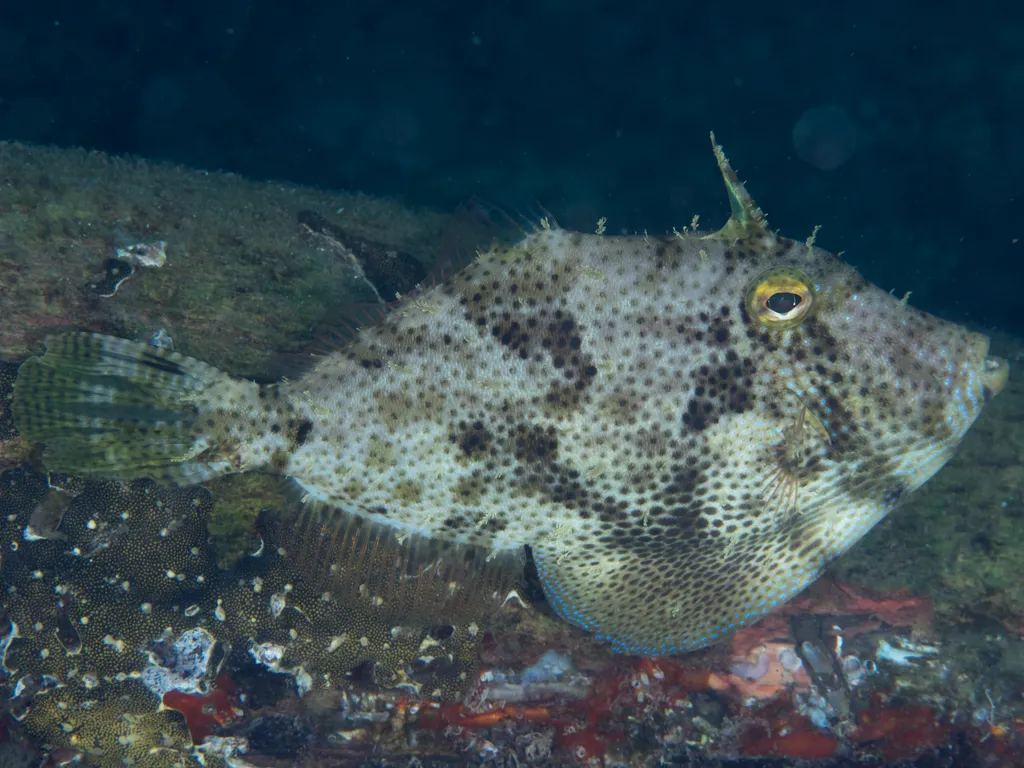
Photo by Rickard Zerpe / CC BY 2.0 via Wikimedia Commons
Filefish (Monacanthidae) are the "hipsters" of the reef—flat, oddly shaped, and masters of looking like something they aren't. Closely related to Triggerfish but with softer bodies and a single prominent dorsal spine, they get their name from their rough, sandpaper-like skin. Instead of speed, they rely on extreme camouflage—drifting head-down to mimic seagrass or changing colors to match a gorgonian fan. From the alien-looking Scrawled Filefish to the tiny, cute Pygmy Leatherjacket, they are a diver's delight if you can spot them before they spot you.
🔬Classification
📏Physical Features
🌊Habitat Info
⚠️Safety & Conservation
Identification Guide
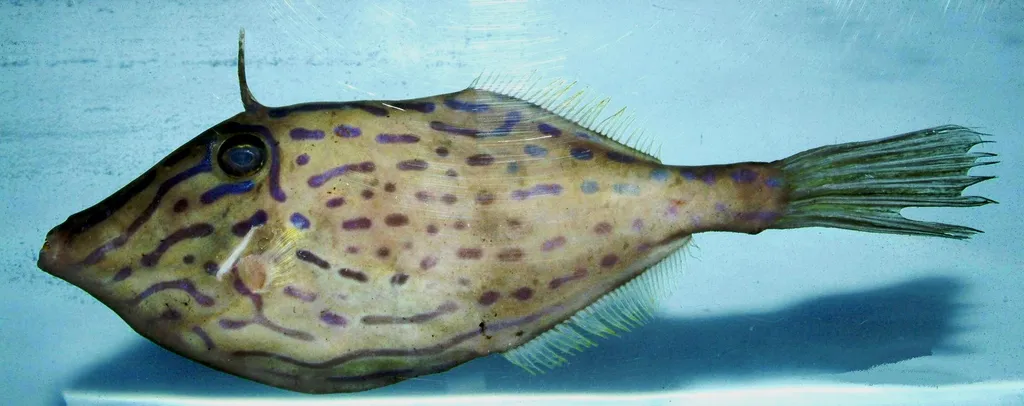
Photo by SEFSC Pascagoula Laboratory; Collection of Brandi Noble via Wikimedia Commons
Field marks:
- Laterally Compressed: Body is very flat (like a pancake), unlike the boxy Boxfish or thick Triggerfish.
- The "Unicorn" Spine: A single, long dorsal spine above the eyes (can be folded down and hidden).
- Broom-like Tail: Caudal fin is usually large and fan-shaped, often closed like a broom when swimming.
- Sandpaper Skin: Looks velvety or rough, lacking visible individual scales.
- Gait: Swims with a wavy motion of dorsal and anal fins; looks like it's "gliding" or drifting.
Differences from Similar Species
- Triggerfish: Have 3 dorsal spines (filefish have 1 or 2, with the second being tiny); triggerfish skin is harder/plated.
- Boxfish: Body is a rigid box; filefish are flat and flexible.
- Pufferfish: Rounder body, no dorsal spine, can inflate (some filefish can inflate slightly, but look very different).
Juvenile vs. Adult
Juveniles often float with drifting debris or sargassum, looking like trash or leaves. Adults settle on reefs or patrol seagrass, often developing intricate blue scribbles (A. scriptus) or honeycomb patterns (C. macrocerus).
Top 10 Fun Facts about Filefish
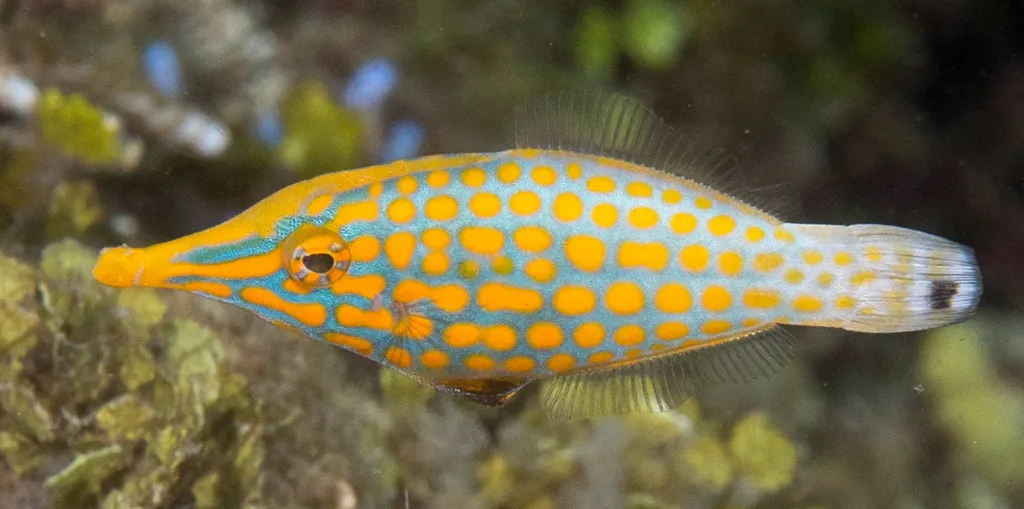
Photo by Rickard Zerpe / CC BY 2.0 via Wikimedia Commons
1. Living Sandpaper
Run your hand along a filefish (if it lets you), and you’ll feel why they got their name. Their skin isn't slimy like most fish; it’s covered in tiny, rough scales that feel exactly like sandpaper. In the days before Home Depot, sailors and carpenters actually used dried filefish skin to sand down wooden boats and finish furniture. They are quite literally swimming tools.
2. The "Unicorn" Horn
That prominent spine on their head isn't just for show—it’s a survival multi-tool. When threatened, a filefish can erect this spine and lock it in place with a second, smaller spine behind it. This allows them to wedge themselves tightly into reef crevices. A predator might be able to grab the tail, but they’ll never pull the fish out. It’s the ocean’s version of a doorstop.
3. Headstand Masters
If you see a fish floating upside down, it’s usually bad news. But for the filefish, it’s just Tuesday. To blend in with their surroundings, they often swim head-down, aligning their bodies perfectly with vertical seagrass blades or branching corals. By drifting with the current in this posture, they become indistinguishable from a floating leaf or a piece of debris, fooling predators and divers alike.
4. The Invisible Fin Trick
Filefish are masters of the "hover". They don't use their tail for normal swimming; instead, they undulate their transparent dorsal and anal fins in a rapid, wave-like motion. This allows them to move with incredible precision—forward, backward, or holding perfectly still—without their body seemingly moving at all. It’s like they are levitating by sheer willpower.
5. Not Just a Pretty Face
While they look goofy, some filefish are hardcore predators. The Scrawled Filefish, for instance, snacks on things that would send other fish to the ER—including stinging jellyfish and hydroids. They seem to be immune to the nematocysts (stinging cells), munching on toxic tentacles as if they were spicy noodles.
6. Evolution Stole Their Legs
Evolution decided filefish didn't need pelvic fins (the fish equivalent of hind legs). Instead, they have a single, modified pelvic spine or a fleshy flap on their belly. In some species, this has disappeared entirely. It helps streamline their profile for that "flat pancake" look, perfect for slipping into narrow hiding spots.
7. The "Leatherjacket" Gang
In Australia and parts of Asia, you’ll hear divers calling them "Leatherjackets". This nickname comes from their tough, thick skin which, when prepared for cooking, peels off in one piece like a jacket. It’s a testament to just how durable their outer armor really is compared to the delicate scales of other reef fish.
8. Master of Textures
Camouflage isn't just about color; it's about texture. The Tasseled Filefish (or Prickly Leatherjacket) takes this to the extreme by growing fleshy, weed-like flaps all over its body. It looks less like a fish and more like a fuzzy piece of coral. You could be staring right at one and swear it’s just part of the reef until it blinks at you.
9. Sleepy Biters
Bedtime on the reef can be dangerous with currents sweeping you away. To get a good night's sleep, some filefish clamp their mouths onto a piece of coral or sponge, effectively tethering themselves in place. It’s a secure way to snooze without waking up miles away from home.
10. Ciguatera Roulette
A word of warning for the gourmets: while filefish are eaten in some cultures, large specimens are notorious for accumulating Ciguatera toxin. Because they graze on algae and small invertebrates on the reef, they concentrate toxins from the food chain. Eating a large filefish can be a game of Russian roulette with your nervous system—best to leave them on the reef.
Diving & Observation Notes
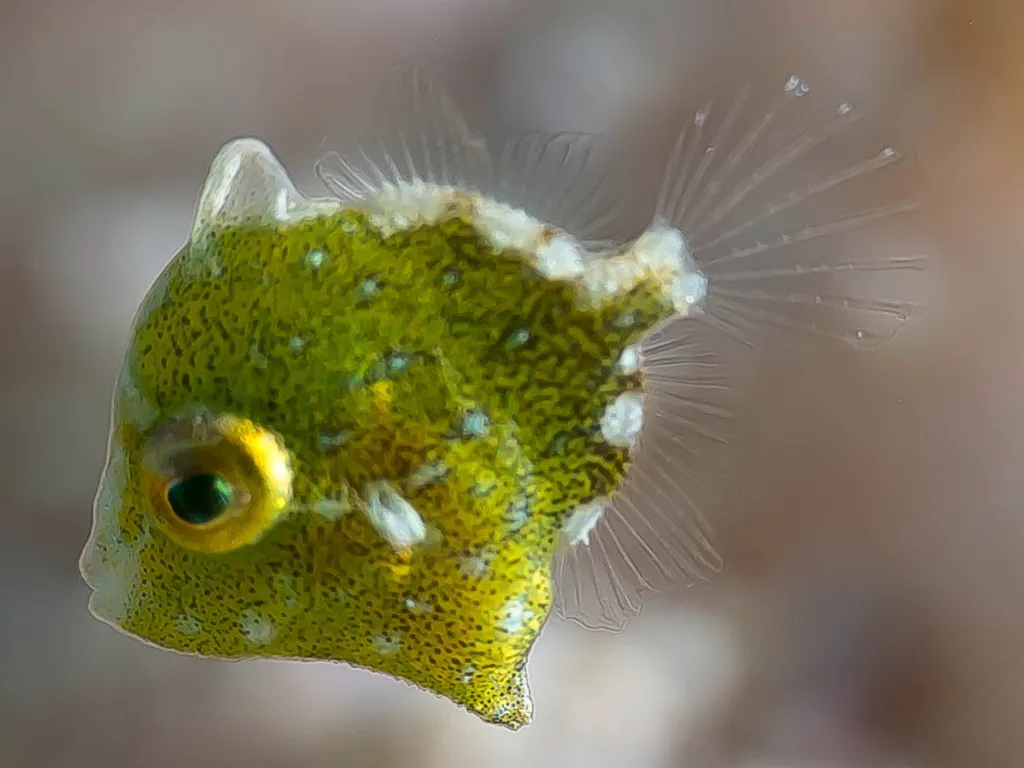
Photo by Rickard Zerpe / CC BY-SA 2.0 via Wikimedia Commons
🧭 Finding Filefish
Stop looking for "fish" and start looking for "weird stuff". A floating leaf in mid-water? Probably a filefish. A piece of trash drifting against the current? Filefish. Check gorgonian fans closely—they often hover right next to them, matching the color perfectly.
🤿 Approach & Behavior
- Go Slow: They are curious but shy. If you rush, they will turn their razor-thin edge towards you, effectively disappearing.
- The "Drift": They often drift away slowly. Don't chase; just drift with them.
- Look Up: Large Scrawled Filefish often cruise in the blue or just under the surface, looking like alien spaceships.
📸 Photo Tips
- Profile is Key: Since they are 2D fish in a 3D world, shoot from the side to show their bizarre shape and patterns.
- Texture Shots: Get close (macro) on the skin to show the "sandpaper" texture or the intricate blue scribbles of the Scrawled Filefish.
- Eye Contact: Their eyes are high on the head and move independently. Try to get the eye looking at you for a comical expression.
⚠️ Ethics & Safety
- Don't Touch: Their skin is rough and can be abrasive. Plus, that dorsal spine is sharp!
- Respect the Camouflage: If a filefish is hiding (head down), it thinks you can't see it. Don't poke it to make it move; enjoy the behavior.
🌏 Local Guide Nuggets
- Lembeh/Anilao: Look for the Hairy/Tasseled Filefish in muck sites—holy grail for macro photographers.
- Red Sea/Maldives: Giant Scrawled Filefish are common here, often ignoring divers completely.
- Caribbean: The Whitespotted Filefish is ubiquitous; look for them changing color from orange to brown as they move between sponges.
Best Places to Dive with Filefish
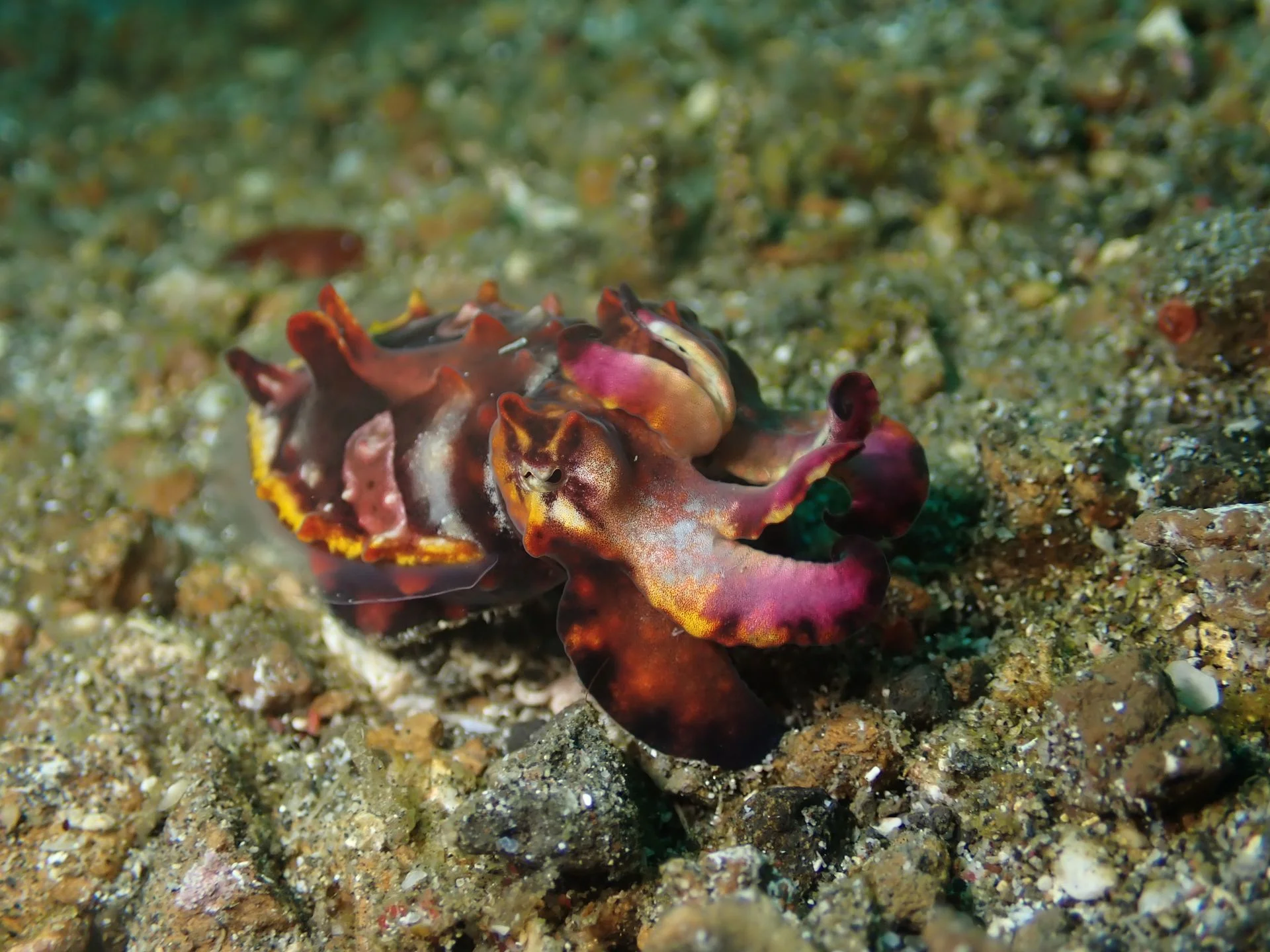
Lembeh
The Lembeh Strait in North Sulawesi has become famous as the muck‑diving capital of the world. At first glance its gently sloping seabed of black volcanic sand, rubble and discarded debris looks bleak. Look closer and it is teeming with weird and wonderful life: hairy and painted frogfish, flamboyant cuttlefish, mimic and blue‑ringed octopuses, ornate ghost pipefish, tiny seahorses, shrimp, crabs and a rainbow of nudibranchs. Most dives are shallow and calm with little current, making it an ideal playground for macro photographers. There are a few colourful reefs for a change of scenery, but Lembeh is all about searching the sand for critter treasures.
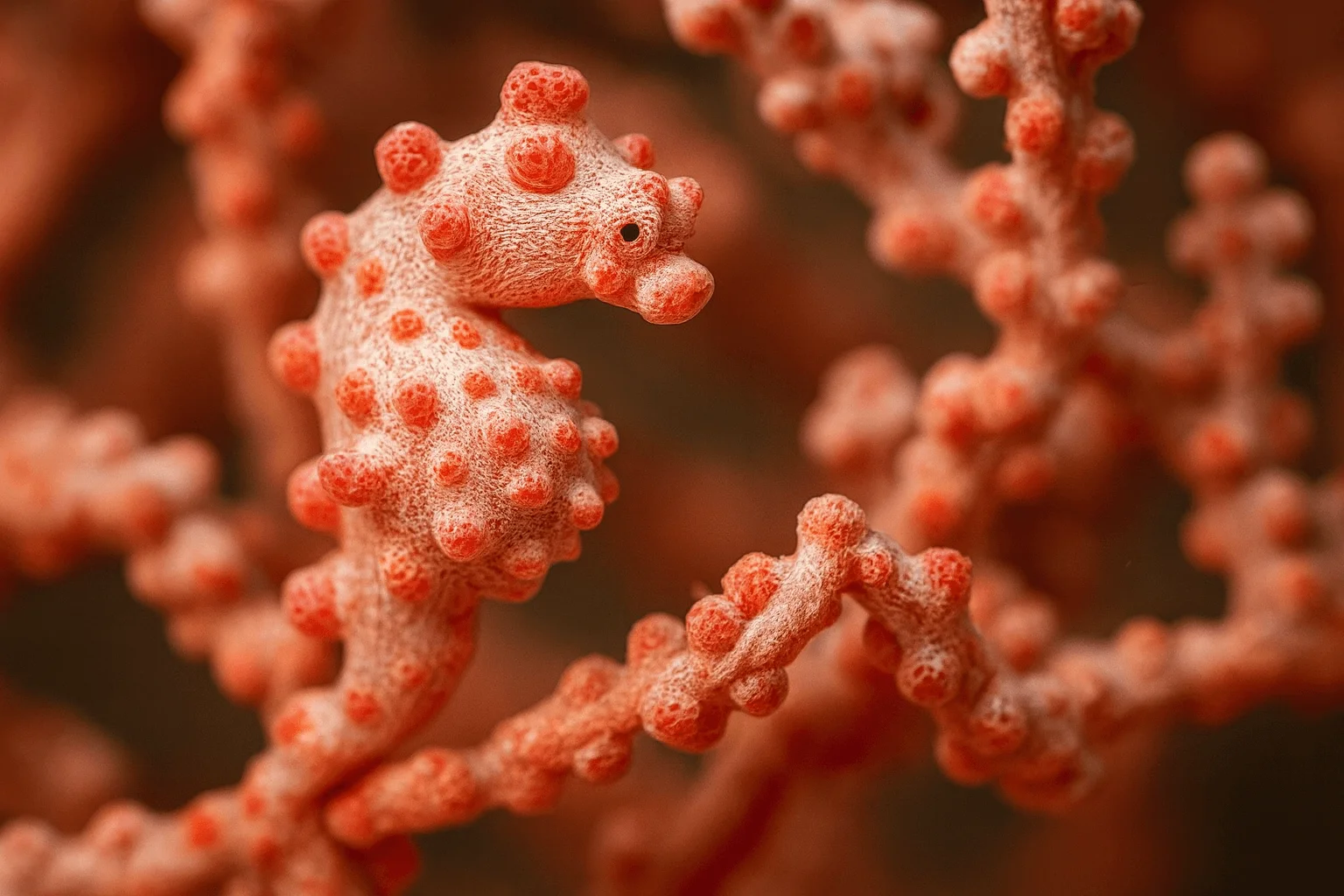
Anilao
Anilao, a small barangay in Batangas province just two hours south of Manila, is often called the macro capital of the Philippines. More than 50 dive sites fringe the coast and nearby islands, offering an intoxicating mix of coral‑covered pinnacles, muck slopes and blackwater encounters. Critter enthusiasts come for the legendary muck dives at Secret Bay and Anilao Pier, where mimic octopuses, blue‑ringed octopuses, wonderpus, seahorses, ghost pipefish, frogfish and dozens of nudibranch species lurk in the silt. Shallow reefs like Twin Rocks and Cathedral are covered in soft corals and teem with reef fish, while deeper sites such as Ligpo Island feature gorgonian‑covered walls and occasional drift. Because Anilao is so close to Manila and open year‑round, it’s the easiest place in the Philippines to squeeze in a quick diving getaway.

Hurghada
Hurghada is one of Egypt’s original Red Sea resorts and remains a popular base for day‑boat diving and liveaboard departures. Situated on the mainland’s eastern shore, the city offers easy access to a wide variety of reefs, wrecks and islands within a short boat ride. Warm, clear waters, gentle conditions and lively coral gardens make Hurghada ideal for training and fun diving, while nearby sites such as Abu Nuhas and the Thistlegorm wreck keep more experienced divers enthralled. Topside, the modern resort town boasts a lively promenade, international restaurants and plenty of après‑dive entertainment.
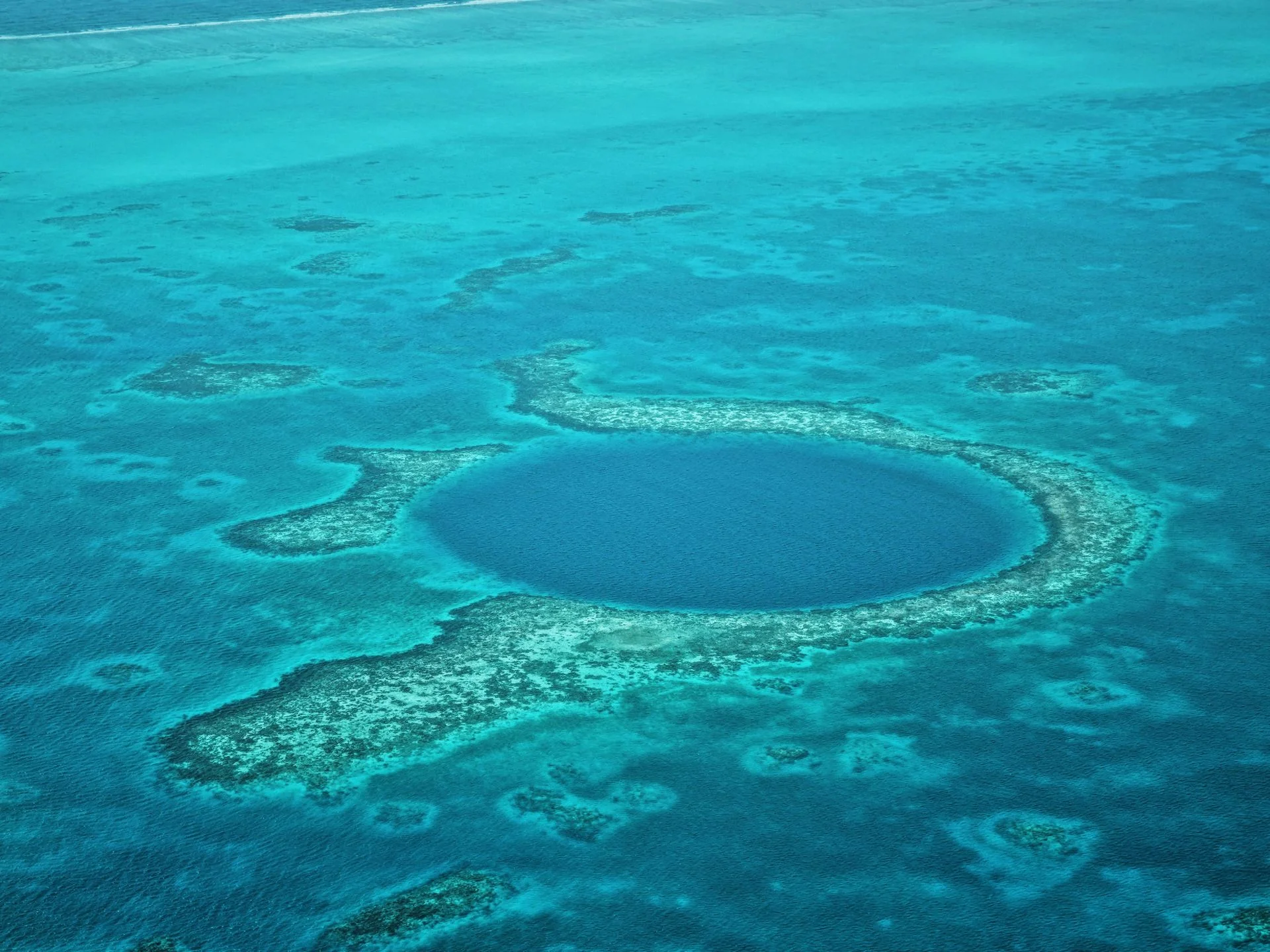
Belize
Straddling the Caribbean and Central America, Belize is home to the world’s second‑largest barrier reef and a string of offshore atolls. Warm, clear water and a relaxed tropical vibe make it a favourite with divers of all levels. The flagship attraction is the Great Blue Hole, a 300‑m‑wide limestone sinkhole plunging to 124 m, but Belize’s real magic lies in its walls and coral gardens. Turneffe Atoll and Lighthouse Reef teem with reef sharks, turtles, eagle rays and massive barrel sponges. Gladden Spit hosts whale sharks from April to June, while Hol Chan Marine Reserve and Shark Ray Alley offer easy snorkelling with nurse sharks and stingrays. Whether you’re a beginner completing your first course or an experienced diver chasing pelagics, Belize delivers with friendly people and laid‑back island life.

Great Barrier Reef
The Great Barrier Reef stretches for more than 2,300 km along Australia’s Queensland coast and is Earth’s largest coral ecosystem. With over 2,900 individual reefs, hundreds of islands, and a staggering diversity of marine life, it’s a bucket‑list destination for divers. Outer reef walls, coral gardens and pinnacles support potato cod, giant trevallies, reef sharks, sea turtles, manta rays and even visiting dwarf minke and humpback whales. Divers can explore historic wrecks like the SS Yongala, drift along the coral‑clad walls of Osprey Reef or mingle with friendly cod at Cod Hole. Whether you’re a beginner on a day trip from Cairns or an experienced diver on a remote liveaboard, the Great Barrier Reef offers unforgettable underwater adventures.